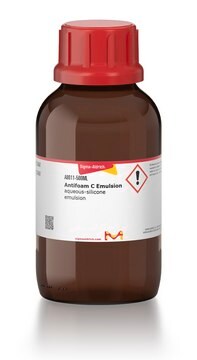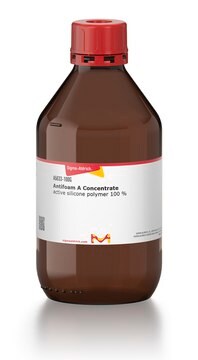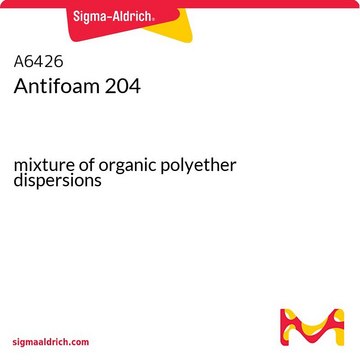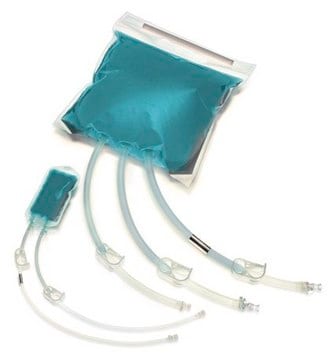A6582
Antifoam A concentrate
active silicone polymer 100%
Sinonimo/i:
Antifoam agent, Antifoam solution, Foam control agent
About This Item
Prodotti consigliati
Livello qualitativo
Forma fisica
emulsion (aqueous)
tecniche
cell culture | hybridoma: suitable
microbiological culture: suitable
Densità
0.97 g/mL at 25 °C
applicazioni
microbiology
Temperatura di conservazione
room temp
Compatibilità
(Mammalian (suspension))
bacteria (fermentation)
Descrizione generale
Applicazioni
- in bioreactor culture for Staphylococcal enterotoxin C (SEC) production.
- to prevent foam formation during the aerobic treatment of sludge.
- to study the impact of surface tension on bioaerosol generation during bubbling.
Caratteristiche e vantaggi
- Molecular biology grade and tested for use in bacterial fermentation.
- Extremely effective foam suppressor for aqueous and non-aqueous systems.
- Made of 100% active silicone polymer, free of emulsifiers.
- Typically, effective at 1-100 ppm.
- Product will be stable in the pH range of 5 to 9.
- Can be directly added to a fermentation medium but it is not recommended that it be pumped to a fermenter on an as-needed basis.
Componenti
Nota sulla preparazione
Prodotti correlati
Avvertenze
Warning
Indicazioni di pericolo
Consigli di prudenza
Classi di pericolo
Aquatic Acute 1 - Aquatic Chronic 1
Codice della classe di stoccaggio
10 - Combustible liquids
Classe di pericolosità dell'acqua (WGK)
WGK 3
Punto d’infiammabilità (°F)
>213.8 °F - closed cup
Punto d’infiammabilità (°C)
> 101 °C - closed cup
Dispositivi di protezione individuale
Eyeshields, Gloves, type ABEK (EN14387) respirator filter
Certificati d'analisi (COA)
Cerca il Certificati d'analisi (COA) digitando il numero di lotto/batch corrispondente. I numeri di lotto o di batch sono stampati sull'etichetta dei prodotti dopo la parola ‘Lotto’ o ‘Batch’.
Possiedi già questo prodotto?
I documenti relativi ai prodotti acquistati recentemente sono disponibili nell’Archivio dei documenti.
Il team dei nostri ricercatori vanta grande esperienza in tutte le aree della ricerca quali Life Science, scienza dei materiali, sintesi chimica, cromatografia, discipline analitiche, ecc..
Contatta l'Assistenza Tecnica.








